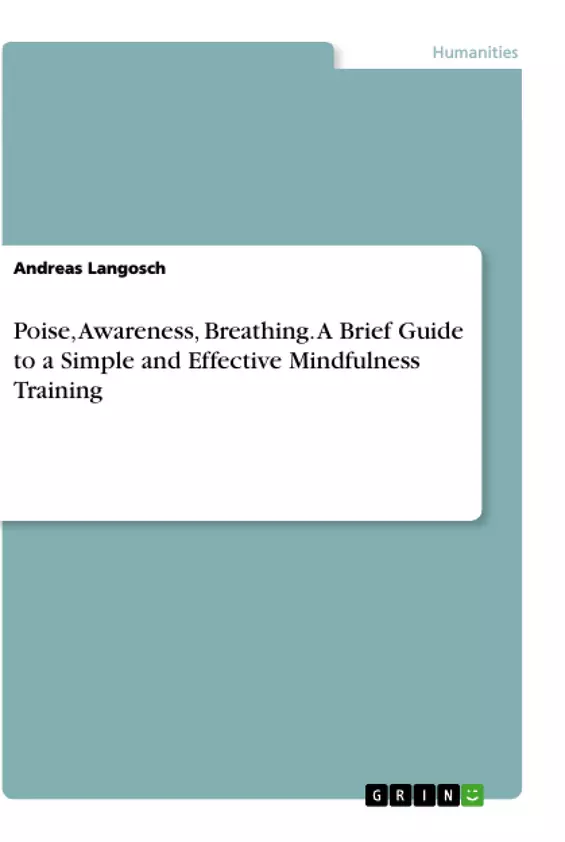The mindfulness training "Poise, Awareness, Breathing" is a means to counteract the habit of avoiding the conscious experience of the present moment. Moreover, it can help us to recognize what we embody here and now, and how we embody it. It can be done standing, sitting, walking, and lying down, and consists of consciously connecting with the resources of poise, awareness, and breathing. The mindfulness training "Poise, Awareness, Breathing" is thus a basic component of resource-oriented work. The mindfulness training "Poise, Awareness, Breathing" was developed within the framework of Resource-Oriented Interviewing, a special form of resource-oriented talking.
Inhaltsverzeichnis (Table of Contents)
- Introduction
- What this mindfulness training is and what it is not
- How this mindfulness training came about
- The Procedure
- Standing
- Sitting
- Walking
- Lying down
- Key Points: Poise, Awareness and Breathing
- Poise
- Awareness
- Breathing
- Questions and Answers
- What is the importance of inhibiting?
- To exercise, or not to exercise... or to exercise after all?
- Watch for signs or force change?
- Training 24/7, that is, around the clock?
- Simple but not easy... or easy after all?
- Experiment and discover - the modus operandi?
- Closing Words
Zielsetzung und Themenschwerpunkte (Objectives and Key Themes)
This guide outlines a simple yet effective mindfulness training program called "Poise, Awareness, Breathing," designed to help individuals become more present and aware in their everyday lives. It aims to counter the habit of disconnecting from the present moment and promotes recognizing one's physical embodiment.
- Developing conscious presence in the present moment
- Counteracting the habit of withdrawing from conscious experience
- Embracing the physical resources of poise, awareness, and breathing
- Utilizing mindfulness as a resource-oriented approach
- Exploring the practical application of mindfulness in various contexts
Zusammenfassung der Kapitel (Chapter Summaries)
The introduction defines the mindfulness training "Poise, Awareness, Breathing" as a method for counteracting the tendency to disconnect from the present moment. It highlights the importance of conscious connection with physical resources and establishes its role as a core component of resource-oriented work.
The "Procedure" chapter delves into the practical application of the training in various positions: standing, sitting, walking, and lying down. It underscores the importance of conscious connection with bodily sensations and the natural breathing cycle in each position.
The "Key Points: Poise, Awareness and Breathing" chapter elaborates on the three fundamental elements of the training. It discusses the role of poise in maintaining balance and control, the significance of heightened awareness of sensory experiences, and the connection between breathing and mindful presence.
The "Questions and Answers" chapter addresses various practical concerns related to the training, offering insights on the importance of inhibiting certain behaviors, the role of exercise, and the potential for incorporating the training into daily life.
Schlüsselwörter (Keywords)
The mindfulness training program "Poise, Awareness, Breathing" focuses on resource-oriented work, conscious presence, embodiment, breath awareness, and practical application in daily life. It aims to counteract the habit of withdrawing from present-moment experience and promotes a deeper understanding of one's physical resources and how they influence overall well-being.
- Quote paper
- Andreas Langosch (Author), 2022, Poise, Awareness, Breathing. A Brief Guide to a Simple and Effective Mindfulness Training, Munich, GRIN Verlag, https://www.hausarbeiten.de/document/1168391


